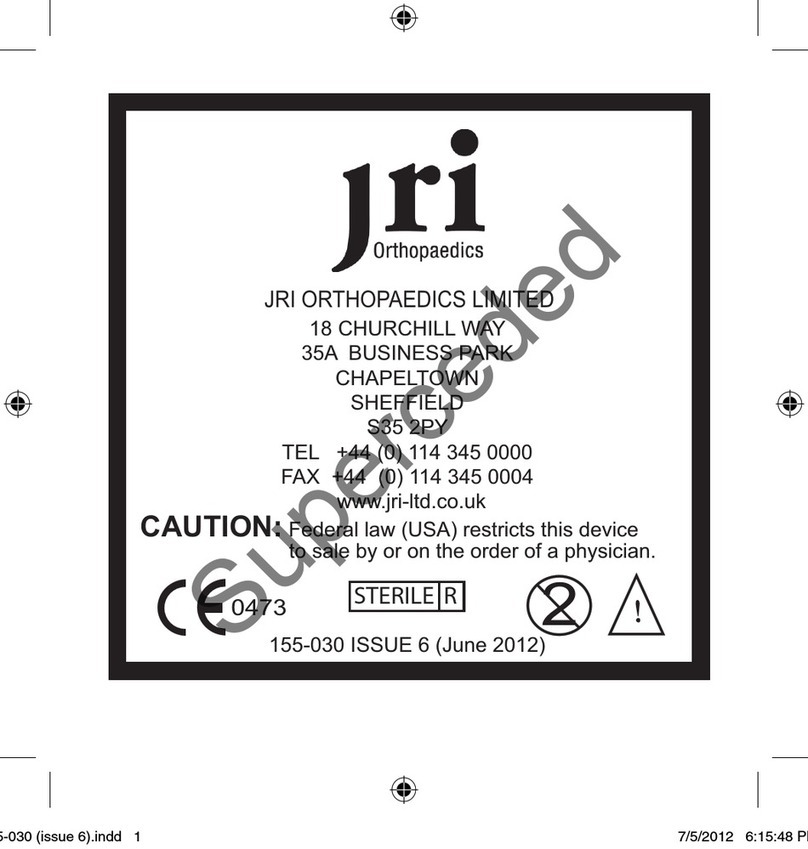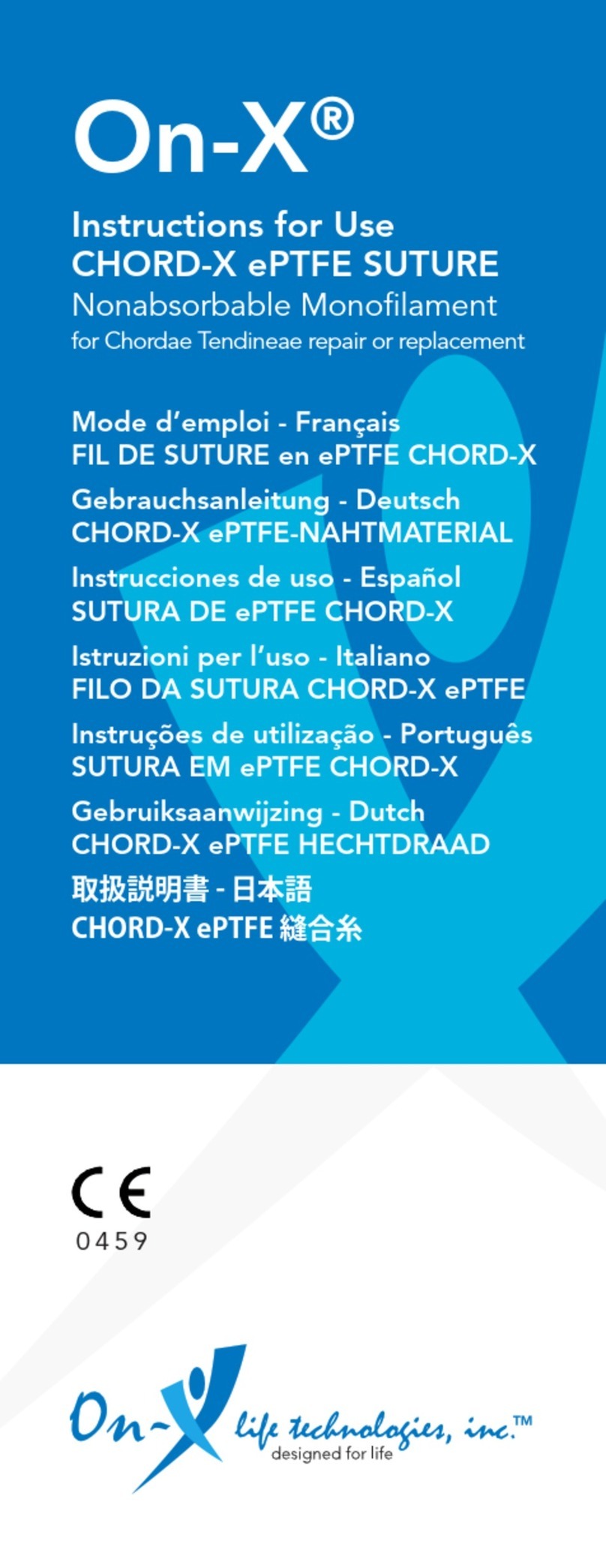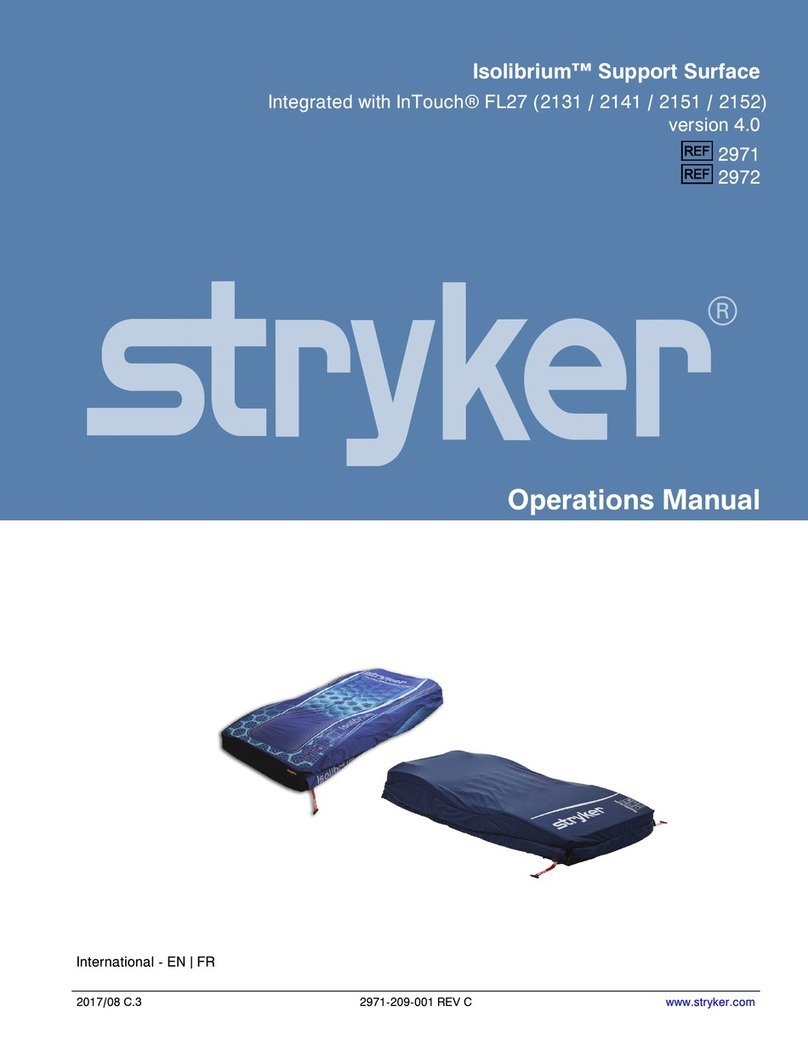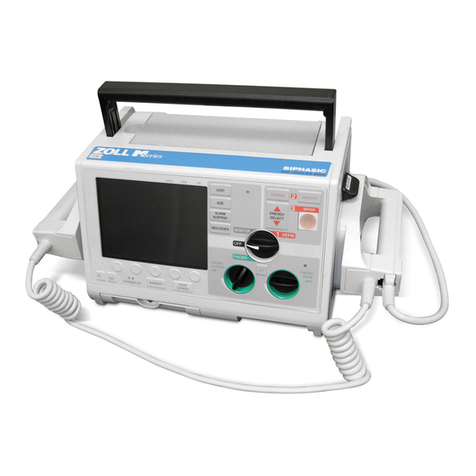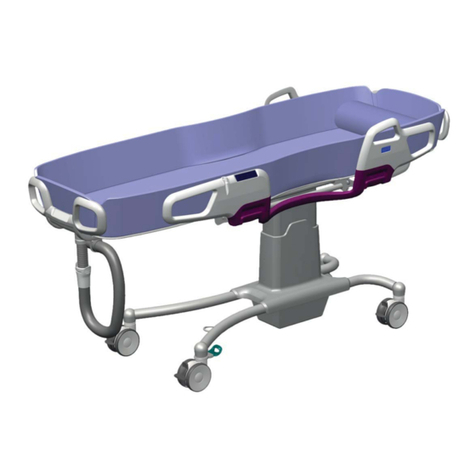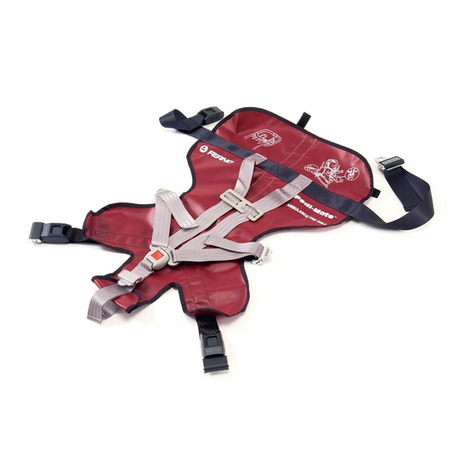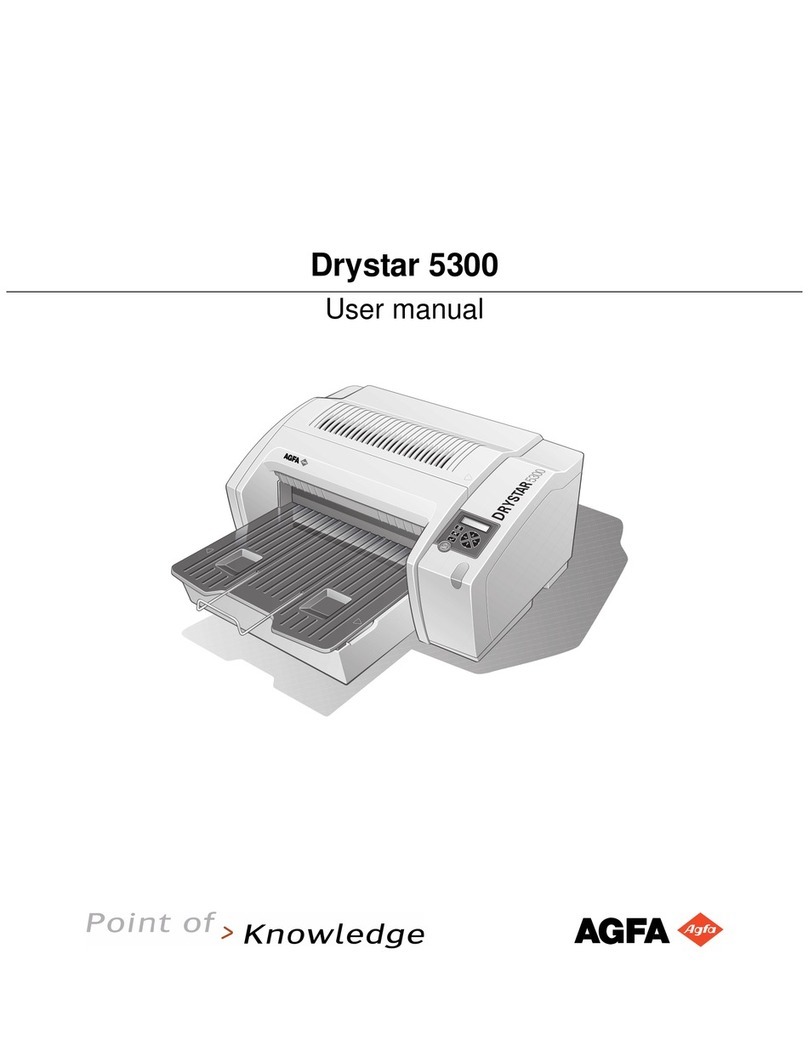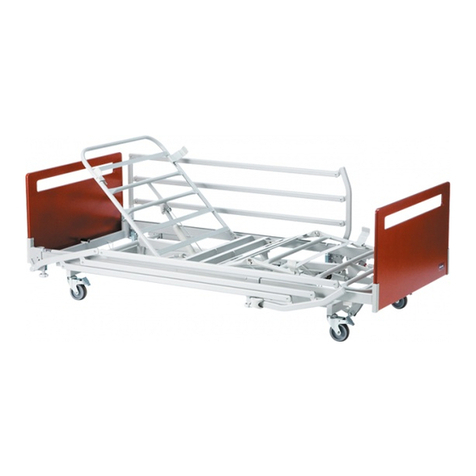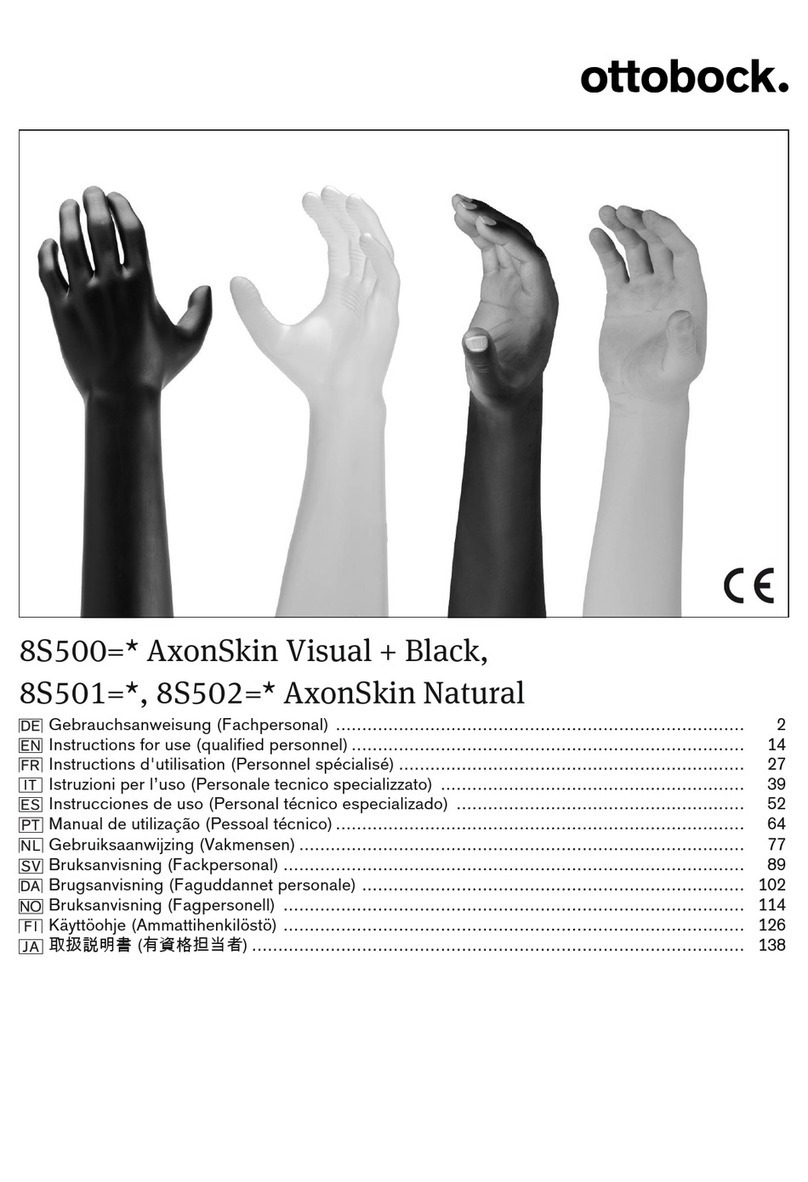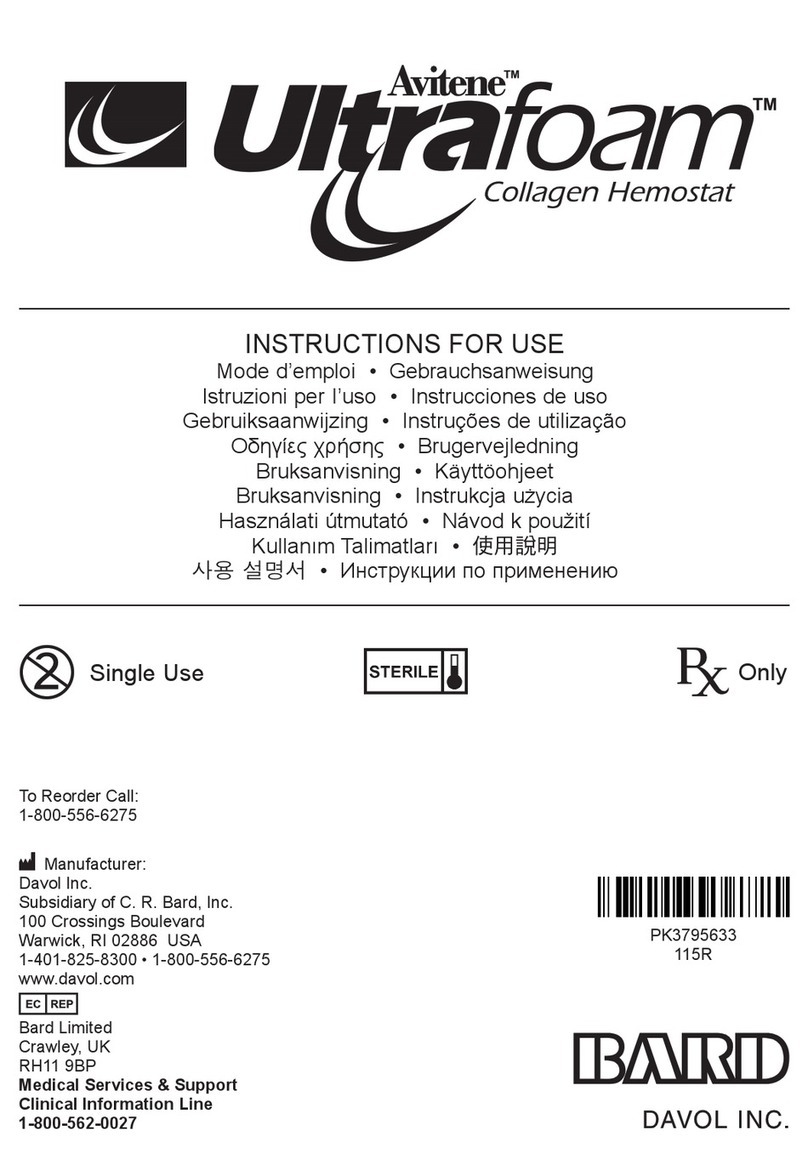JRI VAIOS User manual

JRI ORTHOPAEDICS LTD
18 Churchill Way,
31A Business Park,
Chapeltown,
Sheffield,
S35 2PY, UK
Instructions for Use
VAIOS Shoulder System
IFU 155-032_Iss.9
June 2019
Page 1 of 85

JRI VAIOS®Shoulder System
Contents
English .............................................................................................................................3
Czech ............................................................................................................................ 9
Dansk............................................................................................................................. 15
Deutsch ......................................................................................................................... 21
Español.......................................................................................................................... 28
Français ......................................................................................................................... 35
Italiano .......................................................................................................................... 42
Nederlands.................................................................................................................... 48
Norsk............................................................................................................................. 55
Polski ............................................................................................................................. 61
Português...................................................................................................................... 68
Suomi ............................................................................................................................ 74
Svenska ......................................................................................................................... 80
IFU 155-032_Iss.9
June 2019
Page 2 of 85

JRI VAIOS®Shoulder System
Important Information
Please read instructions for use and corresponding operative technique, prior to use in a clinical setting. The
Surgeon should be familiar with the appropriate operative technique.
Material(s)
Material(s)
Standards
Titanium Alloy
Ti6Al4V
ISO 5832-3
Hydroxyapatite ceramic (H-A.C.)
CA5OH(PO4)3
ISO 13779-1
Cobalt Chrome
CoCr
ISO 5832-4
Ultra-High Molecular Weight Polyethylene
UHMWPE
ISO 5834-2
Symbols
42 = 42mm spherical diameter
Intended Use
VAIOS® Shoulder System comprises a humeral resurfacing system and a total shoulder system design for use in
partial or total, primary or revision shoulder arthroplasty.
Treatment Population
VAIOS® Shoulder System is design for use in skeletally mature individuals where there is sufficient bonestock to
support implantation and fixation of the device.
Description
VAIOS® Shoulder System is a modular system designed for use as either as a total anatomic shoulder system, a
total reverse shoulder system, a shoulder hemiarthroplasty or a humeral resurfacing system.
VAIOS® Anatomic is the total anatomic shoulder replacement option of the VAIOS® Shoulder System. The humeral
component comprises a humeral head, a humeral neck, and a humeral stem. The humeral head is made of cobalt
chrome (CoCr) and fits into the humeral neck component via a locking taper connection. The humeral neck is made
of CoCr and is fully coated with Hydroxyapatite Ceramic (H-A.C.) Ca5OH(PO4)3; the design also features fixation
holes to facilitate attachment of the tuberosities by means of heavy non-absorbable sutures or wire, during
reconstruction of proximal humeral fractures. The humeral stem is screwed into the humeral neck and comes in
two options: a smooth CoCr stem for cemented fixation or a titanium alloy (Ti6Al4V) stem coated with H-A.C. for
uncemented fixation. A variety of sizes are available to suit normal anatomies and a range of offsets provide the
flexibility to adequately cover the resected humeral head and recreate the humeral centre of rotation.
Both cemented and uncemented glenoid options are available.
The cemented glenoid is an all UHMWPE component stabilised in the cement bed via pegs. The uncemented
glenoid includes a glenoid metal back made of Ti6Al4V coated with H-A.C. and a glenoid insert made of UHMWPE.
The metal backed glenoid utilizes four spherical headed bone screws for primary fixation that are angularly
adjustable. The superior and inferior screws can be locked in angular position with a Ti6Al4V locking screw cap, that
because of the small nature of these components, is machined from a handle with an attachment interface designed
to fail, in torque, on assembly.
VAIOS®system bone screws are available for use in a variety of lengths and all are manufactured from Ti6Al4V.
Different articular radii are available for each type and size of glenoid, providing the option for a conforming or a
4mm radially mismatched joint.
IFU 155-032_Iss.9
June 2019
Page 3 of 85

JRI VAIOS®Shoulder System
VAIOS® Reverse is the total reverse shoulder replacement option of the VAIOS® Shoulder System. It shares the
same humeral neck, humeral stem, and metal back glenoid components as the VAIOS® Anatomic option. A reverse
cup component, made of titanium alloy (Ti6Al4V) fits into the humeral neck component using a locking taper
connection and with the additional security of a taper retaining screw (Ti6Al4V), which is then fitted with an all
UHMWPE reverse bearing that clips into the reverse cup. The reverse bearing is available in a range of sizes to
adjust deltoid tension. Concomitantly a reverse dome (CoCr) is available to insert into the metal glenoid backing,
once the screw plug is removed, using a locking tapered connection and with the additional security of a taper
retaining screw (Ti6Al4V) and offering the ability to offset the centre of rotation position laterally.
VAIOS® Hemiarthroplasty is the hemiarthroplasty option of the VAIOS® Shoulder System where only the
humeral component of the shoulder is replaced. VAIOS® Hemiarthroplasty shares the same humeral neck and
humeral stem as the VAIOS® Anatomic and the VAIOS® Reverse. It also comprises a humeral head made of CoCr,
which articulates with the bone of the glenoid.
Longer stems are available for bridging fractures.
IMPORTANT: Adjunctive proximal fixation / support is required for 220mm long stems and cement must be used.
Where there is loss of proximal bone stock, or poor proximal bone quality, bone grafting or other adjunctive
proximal fixation / support is advised for implant stability. It is important that the prosthesis is not distally fixed
without proximal support.
Smaller sized implants should be restricted to patients with smaller bone and regular body mass index and could
be inappropriate for other patients. All HAC Coated components are for use WITHOUT cement, fixation being
achieved through bone ingrowth and union of the coating and the host bone.
VAIOS® Humeral Resurfacing are humeral resurfacing heads are manufactured from CoCr and are available in a
range of sizes for use as a partial joint arthroplasty. The internal bore of both heads are fully coated with
Hydroxyapatite Ceramic Ca5OH(PO4)3and are for use WITHOUT cement, fixation being achieved through bone
ingrowth and union of the coating and the host bone. They are available in various sizes to accommodate
anatomical variations of the humeral head. Cuff Tear Arthroplasty (CTA) resurfacing head options are also available.
The resurfacing heads can be used with a range of VAIOS® glenoid components.
Cuff Tear arthroplasty (CTA) resurfacing heads are not recommended for use in a total joint arthroplasty. It is
advisable that conventional stemmed implants are available when resurfacing hemiarthroplasty is performed.
Indications
VAIOS® Shoulder System is indicated for the following conditions where the humerus is of sufficient bone stock
and there is presence of an intact or reconstructable rotator cuff which is necessary for proper functioning and
dislocation resistance. Similarly resurfacing heads are indicated where the humeral head and neck are of sufficient
bonestock and there is presence of an intact or reconstructable rotator cuff which is necessary for proper
functioning and dislocation resistance:
•Severely painful and/or disabled shoulder joint from osteoarthritis or rheumatoid arthritis.
•Acute traumatic fracture of the humeral head.
•Correction of a painful and disabling functional deformity.
•A painful and disabling arthritis with a reconstructable rotator cuff.
•A painful and disabling post -traumatic arthritis.
Where painful and disabling arthritis of the shoulder, with an irreparable rotator cuff tear is indicated, the reverse
shoulder system is available. Specific indications for use include:
•Cuff tear arthroplasty
IFU 155-032_Iss.9
June 2019
Page 4 of 85

JRI VAIOS®Shoulder System
•Difficult clinical management problems where other methods of treatment may not be suitable or may be
inadequate
Contra-indications
The device should NOT be implanted where there is active infection, insufficient bonestock to support the
prosthesis or provide adequate fixation.
VAIOS® Anatomic and VAIOS® Humeral Resurfacing are contraindicated where there is not an intact or
reconstructable rotator cuff.
Further contra-indications may include the following conditions:
•Severe muscle, nerve or vascular diseases that endanger the extremity in question
•Severe deformations, tumours
•Severe osteoporosis or deficient bone substance that may endanger stable seating of the prosthesis
•Systematic and metabolic disorders
•Weakened or compromised immune system (HIV, tumours, infections)
•Absence of effective shoulder cuff or deltoid
Warning
This device should only be implanted by operating surgeons who are familiar with the general problems of
prosthetic surgery and who are sufficiently trained to the product-specific operative technique. The surgeon is
responsible for ensuring the surgery is carried out properly and in line with the instructions provided in the
operative technique.
As a manufacturer, JRI Orthopaedics Ltd. Is not responsible for any complications arising from incorrect diagnosis,
incorrect choice of implant, incorrect operative technique, treatment methods limitations or inadequate asepsis.
Precautions
The following conditions require caution and due consideration during pre-operative planning by the surgeon:
•Obese or severely overweight patients
•Excessive loading through arduous activity
•Lack of mental faculties to understand post-operative recuperative regime
•Alcohol dependency or drug abuse
•History of falls or disabilities
In patients’ with a high body mass index, where delayed surgery is feasible, it is advisable that a programme of
weight reduction is undertaken prior to any joint replacement surgery.
Pre-operative
Pre-operative planning allows the surgeon to assess for implant size and restoration of biomechanics. X-ray
templates should be used to estimate implant sizes, placement and joint alignment. Failure to carry out proper
planning may lead to incorrect choice of implant type/size. Ensure all implant sizes and required instrumentation
are available prior to surgery. Consult operative technique and training materials provided by JRI Orthopaedics Ltd.
before use.
Functionality of surgical instruments should be checked. Use of damaged instruments may lead to early failure of
implant. Considerations of anatomic loading, soft tissue condition and component placement are critical to
minimise a variety of postoperative complications.
Transient bacteraemia can occur after surgical procedures. To prevent late infection at the implant site, many
orthopaedic surgeons advise the use of antibiotic prophylaxis before and after such procedures for their patients.
Intra-operative
IFU 155-032_Iss.9
June 2019
Page 5 of 85

JRI VAIOS®Shoulder System
Always use a trial for any test fit and to check the range of motion. No responsibility can be taken for complications
due to improper implantation technique or non-specific instrumentation. Failure to use the optimum size of implant
ensuring sufficient fixation may result in early revision surgery.
It is important to have adequate and continuous bone support of the H-A.C. components, particularly the glenoid.
When preparing the bed for the glenoid component, use care to preserve a portion of the subchondral bone plate.
Glenoid preparation is initiated using a short guide wire manufactured from non-implant grade stainless steel and
that provides a positional and angular reference for a cannulated reamer. The guidewire is supplied sterile and is
intended for single use. DO NOT resterilise and/or reuse.
All modular junctions must be firmly impacted together to prevent dissociation. Taper joints should be clean and
dry prior to impaction. Repeated assembly and disassembly of modular components could compromise the locking
action of the taper joint. Wherever possible, modular junctions should be assembled prior to implantation.
It is essential that the components are assembled to the correct technique as specified in the operational technique
and that any connection bolts are tightened to the correct torque values. It is also essential that the locking caps
on the glenoid screws are securely tightened to the correct torque and that care is taken during placement. Care
should also be taken when fitting the UHMWPE inserts into the metal glenoid backing or the reverse cup. These
components CANNOT be reused.
Adjunctive proximal fixation/support is required for 220mm long stems. Where there is loss of proximal bone stock,
or poor proximal bone quality, bone grafting or other adjunctive proximal fixation/support is advised for implant
stability. It is important that the prosthesis is not distally fixed without proximal support.
Care should be taken not to overtighten bone screws. Ensure the appropriate selection of bone screw length and
location to avoid damage to underlying soft tissue areas. When using the reverse anatomy configuration, ensure
that the retaining screw is not cross-threaded or over tightened, and is fully located within the axial recess of the
corresponding reverse anatomy dome. If the screw cannot be fully located in the recess, or fails to engage in the
glenoid, the location of the dome should be checked before attempting to reapply the screw.
Components should only be used with other compatible components of the VAIOS®Shoulder System, with the
corresponding taper connections. Implant components from one manufacturer MUST NOT be used together with
those of another manufacturer, since compatibility of mating parts cannot be assured except for product
combinations specifically tested and approved by JRI.
During the assessment of the range of motion, it is important to check the stability of the joint. For the anatomic
total shoulder, insufficient tension in the rotator cuff mechanism can lead to subluxation of the humeral component
increasing the risk of glenoid loosening and lead to higher wear rates due to edge loading.
Post-operative
Physicians should ensure patients are aware of implant loading limitations and ensure consistent post-operative
care, from a suitably qualified professional, is made available. The incidence and severity of complications are
usually greater in surgical revisions than primary operations. Early detection of an impending complication allows
for timely and effective countermeasures.
Post-operative care should incorporate recognised procedures and take into account information from the
operative technique and documented according to internal hospital procedures. Failure to do this may result in
malalignment, delayed wound/bone healing, implant failure, infection or impaired joint function
Side Effects
As with all major surgical procedures, side effects and adverse events can occur. Some of the more common
complications include:
•Problems resulting from anaesthesia and patient positioning (pain, nausea etc.)
•Infection
IFU 155-032_Iss.9
June 2019
Page 6 of 85

JRI VAIOS®Shoulder System
•Aseptic loosening of implant
•Dislocation, subluxation, insufficient range of movement
•Damage to soft tissue, cuff insufficiency, instability, stiffness
•Fracture of implant, periprosthetic bone or cement
•Allergy/hypersensitivity reactions
•Cardiovascular/pulmonary embolism, respiratory infection, venous thrombosis, neuronal dysfunction,
haematoma or delayed wound healing
Revision
In cases of revision, a total anatomic shoulder prosthesis can be revised to a total reverse shoulder prosthesis.
Longer humeral stem are also available for revision purposes. Ensure that all fragments of the primary prosthesis
and any bone cement (if applicable) are removed, the area cleansed and prepared in accordance with the operative
technique instructions.
Storage & Handling
VAIOS Shoulder System prostheses including guidewires are supplied sterile having been sterilised by Gamma
irradiation. Discard single use guidewires after use. DO NOT resterilise.
UHMWPE cannot be re-sterilised.
Store implants in their original protective packaging in a clean and dry atmosphere.
Do not use if the packaging is damaged. Do not use this product after the expiry date (year-month) shown on the
product packaging.
Avoid removing from packaging until immediately prior to use. Inspect device prior to use. Visibly damaged,
scratched, improperly handled implants and implants that have already been used must not be implanted under
any circumstances as the functionality, integrity and/or sterility of that device may have been adversely affected
and therefore cannot be guaranteed. Exposed articular surfaces must be neither marked nor come into contact
with metallic or hard objects. Touching the articular surfaces, the Hydroxyapatite coating or the tapered interface
for the liner must be avoided.
MRI Safety Information
Non-clinical testing has demonstrated that VAIOS Shoulder System is MRI Conditional. A patient with this device
can be safely scanned in an MR system meeting the following conditions:
• Static magnetic field of 3.0 T
• Maximum spatial field gradient of 720 gauss/cm
• Maximum whole body averaged specific absorption rate (SAR) of 3.0W/kg
Under the scan conditions defined above, the VAIOS Shoulder System is expected to produce a maximum
temperature rise of 1.7°C after 15 minutes of continuous scanning.
The image quality may be compromised if the area of interest is in the exact same area, or relatively close to, the
position of the medical device. Therefore, optimization of MR imaging parameters to compensate for the presence
of this device may be necessary:
Pulse Sequence T1-SE T1-SE GRE GRE
Signal Void Size 42,763-mm217,875-mm256,249-mm228,917-mm2
Plane Orientation Parallel Perpendicular Parallel Perpendicular
Additional information regarding MRI safety is available upon request at JRI Orthopaedics Ltd.
IFU 155-032_Iss.9
June 2019
Page 7 of 85

JRI VAIOS®Shoulder System
Functional Device Lifespan
The functional lifespan of an implant may be impacted by surgeon and selected operative technique, patient
physiology and activity levels. Whilst it is normally expected that the lifetime of this implant will exceed a minimum
of 10 years, it will be subject to wear and tear through normal everyday use.
Products intended for single-use must not be re-used
Re-use or reprocessing (e.g. cleaning and re-sterilisation) may compromise the structural integrity of the device and
/ or lead to device failure which may result in patient injury or death.
Reuse or reprocessing of single-use devices may create a risk of contamination (e.g. transmission of infectious
material) which may result in injury or death.
Further information
For product specific operative technique training or further information, please contact your JRI Orthopaedics Ltd.
Sales Representative or JRI Orthopaedics Ltd. directly.
JRI ORTHOPAEDICS LTD
18 Churchill Way,
35A Business Park,
Chapeltown,
Sheffield,
S35 2PY, UK
Tel: +44(0)114 345 0000
Fax: +44(0)114 345 0004
www.jri-ltd.co.uk
IFU 155-032_Iss.9
June 2019
Page 8 of 85

Ramenný systém JRI VAIOS®
Důležité informace
Před použitím v klinických podmínkách si prostudujte návod k použití a odpovídající operační techniku. Chirurg
by měl znát příslušnou operační techniku.
Materiál(y)
Materiál(y)
Normy
Slitina titanu
Ti6Al4V
ISO 5832-3
Hydroxyapatitová keramika (H-A.C.)
CA
5
OH(PO
4
)
3
ISO 13779-1
Kobalt a chrom
CoCr
ISO 5832-4
Ultravysokomolekulární polyethylen
UHMWPE
ISO 5834-2
Symboly
42 = 42mm sférický průměr
Zamýšlené použití
Ramenný systém VAIOS® sestává ze systému k resurfacingu humeru a totálnímu ramennímu systému k použití v
parciální nebo totální, primární nebo revizní artroplastice ramene.
Zamýšlená populace
Ramenný systém VAIOS® je navržen k použití u skeletálně zralých osob s dostatečnou kostní hmotou, která zajistí
podporu implantace a fixaci prostředku.
Popis
Ramenný systém VAIOS® je modulární systém navržen k použití jako totální anatomický ramenný systém, totální
reverzní ramenný systém, systém k hemiartoplastice ramene nebo systém k resurfacingu humeru.
VAIOS® Anatomic je položka k totální anatomické náhradě ramene ramenného systému VAIOS®. Humerální složka
sestává z hlavice humeru, krčku humeru a dříku humeru. Hlavice humeru je vyrobena ze slitiny kobaltu a chromu
(CoCr) a připojuje se ke krčku humeru přes fixační zúžení. Krček humeru je vyroben z CoCr a je plně potažen
hydroxyapatitovou keramikou (H-A.C.). Ca5OH(PO4)3; konstrukce také obsahuje fixační otvory ulehčující připojení
hrbolů pomocí těžkých nevstřebatelných stehů nebo drátu během rekonstrukce fraktur humeru. Dřík humeru je
přišroubován na krček humeru a dodává se ve dvou možnostech: hladký CoCr dřík pro cementovanou fixaci nebo
dřík ze slitiny titanu (Ti6Al4V) potažený H-A.C. k bezcementové fixaci. K dispozici jsou různé velikosti vhodné pro
normální anatomické poměry a široké spektrum offsetů zajišťuje flexiblitu a adekvátní pokrytí resekované hlavice
humeru a vytvoření humerálního centra rotace.
K dispozici jsou cementované i bezcementové glenoidy.
Cementovaný glenoid je celo-UHMWPE složka stabilizovaná v cementovém lůžku pomocí kolíků. Bezcementový
glenoid zahrnuje kovovou základnu glenoidu vyrobenou z Ti6Al4V potaženou H-A.C. a glenoidální vložku vyrobenou
z UHMWPE. Glenoid s kovovou základnou používá k primární fixaci čtyři kostní šrouby se sférickou hlavičkou
umožňující úpravu úhlu. Horní a spodní šrouby lze zajistit v úhlové poloze pomocí krytky pojistného šroubu Ti6Al4V,
která je vzhledem k malé velikosti těchto součástí vyrobená z rukojeti s připojovacím rozhraním navržené tak, aby
při sestavování pod vyšším točivým momentem selhala.
Kostní šrouby systému VAIOS®jsou dostupné v různých velikostech a všechny jsou vyrobeny z Ti6Al4V.
Pro každý typ a velikost glenoidu jsou k dispozici různé kloubní poloměry umožňující plné přizpůsobení nebo kloub
se 4mm radiálním posunem.
IFU 155-032_Iss.9
June 2019
Page 9 of 85

Ramenný systém JRI VAIOS®
VAIOS® Reverse je volitelná položka k totální reverzní náhradě ramene ramenného systému VAIOS®. Má stejný
krček humeru, dřík humeru a kovovou základnu glenoidu jako VAIOS® Anatomic. Reverzní jamka vyrobená ze slitiny
titanu (Ti6Al4V) se připojuje ke krčku humeru pomocí fixačního zúžení za současného zajištění zúženým retenčním
šroubem (Ti6Al4V), který je vybaven celo-UHMWPE reverzním ložiskem, které zapadá do reverzní jamky. Reverzní
ložisko je dostupné v širokém spektru velikostí sloužících k úpravě napětí deltoideu. Současně je k dispozici reverzní
klenba (CoCr), která se vkládá do kovové základny glenoidu po vytažení šroubového kolíku pomocí zajišťovacího
zúženého spoje a s dalším zajištěním zúženým retenčním šroubem (Ti6Al4) a možností laterálního posunu centra
rotace.
VAIOS® Hemiarthroplasty je hemiartroplastická volba ramenného systému VAIOS®, kdy se nahrazuje pouze
humerální složka ramene. VAIOS® Hemiarthroplasty má stejný krček a dřík humeru jako VAIOS® Anatomic a
VAIOS® Reverse. Také obsahuje hlavici humeru vyrobenou z CoCr, která přichází do kloubního kontaktu s kostí
glenoidu.
K přemostění fraktur jsou k dispozici delší dříky.
DŮLEŽITÉ: Dříky v délce 220 mm vyžadují doplňkovou proximální fixaci/podporu a použití cementu. V případech se
sníženým kostním objemem nebo nízkou kvalitou proximální kosti doporučujeme zajistit stabilitu implantátu
kostním štěpem nebo jinou doplňkovou proximální fixací/oporou. Protézy nesmí být zafixované distálně bez
proximální opory.
Menší implantáty jsou určené pouze pro pacienty s malou kostí a normálním body mass indexem, pro jiné pacienty
můžou být nevhodné. Všechny součásti potažené HAC jsou určené k použití BEZ cementu. Fixace je zajištěna
vrůstáním kosti a splynutím potahové vrstvy s hostitelskou kostí.
VAIOS® Humeral Resurfacing jsou hlavice k resurfacingu humeru vyrobené z CoCr a dostupné v širokém spektru
velikostí k použití k parciální kloubní artroplastice. Vnitřní povrch obou hlavice je plně potažen hydroxyapatitovou
keramikou Ca5OH(PO4)3a je určen k použití BEZ cementu. Fixace je zajištěna vrůstáním kosti a splynutím povrchové
úpravy s hostitelskou kostí. K dispozici jsou různé velikosti pro anatomické variace hlavice humeru. K dispozici jsou
také hlavice k resurfacingu s artroplastikou při roztržené rotátorové manžetě (CTA). Hlavice k resurfacingu lze
používat s různými glenoidálními součástmi VAIOS®.
Hlavice k resurfacingu s artroplastikou při roztržené rotátorové manžetě (CTA) se nedoporučují u totální
artroplastiky kloubu. Při hemiartroplastice s resurfacingem doporučujeme, aby byly dostupné také implantáty s
konvenčním dříkem.
Indikace
Ramenný systém VAIOS® je indikován u následujících onemocnění v terénu s dostatečnou kostní hmotou humeru
s intaktní nebo rekonstruovatelnou rotátorovou manžetou, která je potřebná pro správnou funkci a odolnost vůči
dislokaci. Podobně jsou hlavice k resurfacingu indikovány v terénu s dostatečnou kostní hmotou hlavice a krčku
humeru s intaktní nebo rekonstruovatelnou rotátorovou manžetou, která je potřebná pro správnou funkci a
odolnost vůči dislokaci.
•Velice bolestivý a/nebo dysfunkční ramenný kloub v důsledku osteoartitidy nebo revmatoidní artritidy.
•Akutní traumatická fraktura hlavice humeru.
•Korekce bolestivé a invalidizující funkční deformace.
•Bolestivá a invalidizující artritida s rekonstruovatelnou rotátorovou manžetou.
•Bolestivá a invalidizující posttraumatická artritida.
V terénu bolestivé a invalidizující artritidy ramene s nerekonstruovatelným roztržením rotátorové manžety je k
dispozici reverzní ramenný systém. Specifické indikace použití zahrnují:
•Artroplastika při roztržené rotátorové manžetě
IFU 155-032_Iss.9
June 2019
Page 10 of 85

Ramenný systém JRI VAIOS®
•Problémy s náročným klinickým řešením, kde jiné možnosti léčby nemusí být vhodné nebo adekvátní
Kontraindikace
Prostředek NEIMPLANTUJTE do terénu aktivní infekce, nedostatečného objemu kostní hmoty pro podporu protézy
nebo k zajištění adekvátní fixace.
VAIOS® Anatomic a VAIOS® Humeral Resurfacing jsou kontraindikovány v terénu bez intaktní nebo
rekonstruovatelné rotátorové manžety.
Další kontraindikace můžou zahrnovat následující onemocnění:
•Závažné svalové, nervové nebo cévní nemoci, které ohrožují danou končetinu
•Závažné deformace, tumory
•Závažná osteoporóza nebo deficientní kostní povrch, který může ohrozit stabilní usazení protézy
•Systémová a metabolická onemocnění
•Oslabený nebo narušený imunitní systém (HIV, tumory, infekce)
•Absence efektivní ramenné manžety nebo deltoidu
Varování
Tento prostředek smějí implantovat výhradně chirurgové znalí obecných problémů protetické operativy, kteří
úspěšně prošli školením operační techniky specifické pro produkt. Chirurg nese zodpovědnost za zajištění
správného provedení zákroku v souladu s pokyny uváděnými v tomto popisu operační techniky.
Jako výrobce nenese společnost JRI Orthopaedics Ltd. zodpovědnost za žádné komplikace vznikající v důsledku
nesprávné diagnózy, nesprávné volby implantátu, nesprávné operační techniky, omezení terapeutických metod
ani neadekvátní asepse.
Bezpečnostní opatření
Následující stavy vyžadují pozornost chirurga během předoperačního plánování:
•Obézní pacienti nebo pacienti s významnou nadváhou
•Nadměrné zatížení namáhavou aktivitou
•Nedostatečná mentální kapacita pacienta porozumět pooperačnímu léčebnému režimu
•Závislost na alkoholu, užívání léků, drogy
•Anamnéza pádů nebo postižení
Pacienti s vysokou hodnotou body mass indexu nebo vyšší by měli před výměnným zákrokem absolvovat program
redukce tělesné hmotnosti, pokud je možné provést odložený zákrok.
Předoperační postup
Předoperační plánování umožňuje chirurgovi vyhodnotit velikost implantátu a obnovu biomechanických vlastností.
Pomocí RTG šablon odhadněte velikosti implantátu, uložení a zarovnání kloubu. Nesprávné plánování může vést k
výběru nesprávného typu/velikosti implantátu. Před zákrokem se ujistěte, že máte k dispozici veškeré velikosti
implantátů a požadované nástroje. Před použitím si prostudujte operační techniku a školicí materiály dodávané
společností JRI Orthopaedics Ltd.
Zkontrolujte funkčnost chirurgických nástrojů. Použití poškozených nástrojů může vést k časnému selhání
implantátu. Vyhodnocení anatomické zátěže, stavu měkkých tkání a uložení součástí jsou zásadní pro minimalizaci
různých pooperačních komplikací.
Po chirurgických zákrocích může dojít k přechodné bakteremii. Aby nedošlo k pozdní infekci v místě implantátu,
mnozí chirurgové doporučují u svých pacientů použít před těmito zákroky a po nich antibiotickou profylaxi.
Peroperační postup
Vždy otestujte dosednutí pomocí šablony a zkontrolujte rozsah pohybu. Odmítáme jakoukoli zodpovědnost za
komplikace způsobené nesprávnou technikou implantace nebo použitím nespecifických nástrojů. Pokud
IFU 155-032_Iss.9
June 2019
Page 11 of 85

Ramenný systém JRI VAIOS®
nepoužijete optimální velikost implantátu, která by zajišťovala dostatečnou fixaci, může být nutné provést časnou
revizi.
Adekvátní a kontinuální kostní podpora H-A.C. součástí, hlavně glenoidu, je velice důležitá. Při přípravě lůžka pro
glenoidální součást postupujte opatrně, abyste zachovali část subchondrální kostní ploténky.
Příprava glenoidu se zahajuje pomocí krátkého vodicího drátu vyrobeného z nerezové oceli neurčené k implantaci,
který zajišťuje polohovou a úhlovou referenci pro kanylovaný závitník. Vodicí drát je dodáván sterilní a je určen k
jednorázovému použití. NEPROVÁDĚJTE resterilizaci ani nepoužívejte opakovaně.
Všechny modulární spoje je nutné pevně stlačit, aby nedošlo k odpojení. Zúžené spoje musí být před připojením
čisté a suché. Opakované sestavení a demontování modulárních součástí může narušit fixační funkci zúženého
spoje. Kdykoli to bude možné, sestavte modulární spoje před implantací.
Součásti je nutné sestavit správnou technikou v souladu se specifikacemi v operační technice. Propojovací šrouby
je nutné utáhnout pod správným momentem. Pojistné krytky glenoidálních šroubů musí být také bezpečně utaženy
pod správným momentem a při jejich nasazování je nutné postupovat opatrně. Dávejte pozor také při nasazování
UHMWPE vložek do kovové základny glenoidu nebo reverzní jamky. Tyto součásti NELZE používat opakovaně.
Dříky v délce 220 mm vyžadují doplňkovou proximální fixaci/podporu. V případech se sníženým kostním objemem
nebo nízkou kvalitou proximální kosti doporučujeme zajistit stabilitu implantátu kostním štěpem nebo jinou
doplňkovou proximální fixací/oporou. Protézy nesmí být zafixované distálně bez proximální opory.
Kostní šrouby příliš neutahujte. Zvolte kostní šrouby o adekvátní délce a vyberte vhodné místo, aby nedošlo k
postižení níže ležících měkkých tkání. Při použití reverzní anatomické konfigurace se ujistěte, že závity retenčního
šroubu dosedají správně, že retenční šroub není přetažen a že je plně uložen v axiálním výklenku příslušné reverzní
anatomické klenby. Pokud šroub nelze zcela vložit do výklenku nebo se nepřipojí v glenoidu, zkontrolujte polohu
klenby, než se pokusíte šroub znovu nasadit.
Součásti používejte výhradně s jinými kompatibilními součástmi ramenného systému VAIOS®s odpovídajícími
zúženými spoji. Součásti implantátu od jednoho výrobce NEPOUŽÍVEJTE v kombinaci s díly od jiného výrobce, jelikož
nelze zaručit kompatibilitu propojovaných dílů. Výjimku představují kombinace produktů specificky testované a
schválené společností JRI.
Během hodnocení rozsahu pohybu zkontrolujte také stabilitu kloubu. U anatomické totální artroplastiky ramene
může nedostatečný tah mechanismu rotátorové manžety vést k subluxaci humerální součásti, co zvyšuje riziko
uvolnění glenoidu a vede k vyššímu opotřebení kvůli zatížení okraje.
Pooperační postup
Lékaři musí pacienty poučit o omezené nosnosti implantátu a zajistit konzistentní pooperační péči vhodně
kvalifikovaným specialistou. Incidence a tíže komplikací je obvykle vyšší u chirurgických revizí než primárních
implantací. Časná detekce hrozících komplikací umožní včasná a efektivní opatření.
Pooperační péče by měla zahrnovat uznávané postupy a zohlednit informace z operační techniky a dokumentované
dle interních nemocničních postupů. V opačném případě může dojít k nesprávnému zarovnání, prodlevě hojení
rány/kosti, infekci nebo narušení kloubní funkce.
Vedlejší účinky
Podobně jako u všech významných chirurgických postupů se mohou objevit vedlejší účinky a nežádoucí příhody.
Některé z nejčastějších komplikací jsou:
•Problémy v důsledku anestezie a polohování pacienta (bolest, nevolnost atd.)
•Infekce
•Aseptické uvolnění implantátu
•Dislokace, subluxace, nedostatečný rozsah pohybu
•Poškození měkkých tkání, insuficience manžety, nestabilita, tuhost
IFU 155-032_Iss.9
June 2019
Page 12 of 85

Ramenný systém JRI VAIOS®
•Fraktura implantátu, periprotetické kosti nebo cementu
•Alergické reakce / reakce z přecitlivělosti
•Kardiovaskulární/plicní embolie, respirační infekce, žilní trombóza, nervová dysfunkce, hematom nebo
prodloužené hojení rány
Revize
V případě revize lze totální anatomickou ramennou protézu revidovat na totální reverzní ramennou protézu. Pro
revizní zákroky jsou také k dispozici delší dříky humeru. Ujistěte se, že jste odstranili všechny fragmenty primární
protézy a veškerý kostní cement (pokud relevantní), oblast vyčistili a připravili v souladu s pokyny k operační
technice.
Uskladnění a manipulace
Protézy ramenného systému VAIOS, včetně vodicích drátů, se dodávají sterilní. Sterilizace byla provedena zářením
gama. Po použití je nutné jednorázové vodicí dráty zlikvidovat. NERESTERILIZUJTE.
UHMWPE nelze resterilizovat.
Implantáty uchovávejte v původním ochranném obalu v čisté a suché atmosféře.
Nepoužívejte, pokud je obal poškozen. Tento produkt nepoužívejte po uplynutí data spotřeby (rok-měsíc)
uvedeného na obalu produktu.
Obal odstraňujte pouze krátce před použitím. Před použitím zkontrolujte implantovaný prostředek. Viditelně
poškozené, poškrábané implantáty, implantáty vystavené nesprávné manipulaci nebo již použité implantáty je
zakázáno implantovat za jakýchkoli okolností, jelikož stav může mít nepříznivý vliv na funkčnost, integritu a/nebo
sterilitu daného prostředku. Tyto aspekty tudíž nelze garantovat. Exponované kloubní povrchy nesmí být označeny
ani přijít do kontaktu s kovovými nebo tvrdými předměty. Nedotýkejte se kloubních povrchů, hydroxyapatitové
povrchové úpravy ani zúženého rozhraní pro vložku.
Bezpečnost v prostředí MRI
Neklinické testování prokázalo, že ramenný systém VAIOS je podmíněně kompatibilní s prostředím MR. Pacient s
tímto prostředkem může bezpečně podstoupit zobrazovací vyšetření v systému MR za následujících podmínek:
• Statické magnetické pole 3,0 T
• Maximální prostorový gradient pole 720 Gauss/cm
• Maximální celotělová průměrná míra specifické absorpce (SAR) 3,0 W/kg
V rámci výše definovaných podmínek snímání se očekává, že ramenný systém VAIOS vytváří maximální nárůst
teploty o 1,7 °C po 15 minutách nepřetržitého snímání.
Pokud se oblast zájmu nachází přesně ve stejném místě nebo relativně blízko polohy zdravotnického prostředku,
může být narušena kvalita snímku. Proto může být nutné provést optimalizaci parametrů zobrazování MR za účelem
kompenzace přítomnosti tohoto prostředku:
Pulzní sekvence T1-SE T1-SE GRE GRE
Velikost prázdného signálu 42 763 mm217 875 mm256 249 mm228 917 mm2
Orientace roviny Paralelní Vertikální Paralelní Vertikální
Další informace o bezpečnosti MRI vám na požádání poskytne společnost JRI Orthopaedics Ltd.
Funkční životnost prostředku
Funkční životnost implantátu mohou ovlivnit chirurg a zvolená operační technika, fyziologie pacienta a úrovně
aktivity. I když se za normálních okolností očekává, že životnost tohoto implantátu překročí minimálně 10 let, bude
vystaven opotřebení spojenému s normálním každodenním použitím.
IFU 155-032_Iss.9
June 2019
Page 13 of 85

Ramenný systém JRI VAIOS®
Produkty určené k jednorázovému použití je zakázáno používat opakovaně
Opakované použití nebo zpracování k opakovanému použití (např. čištění a resterilizace) mohou narušit strukturální
integritu prostředku a/nebo vést k jeho selhání s následným poraněním nebo úmrtím pacienta.
Opakované použití nebo zpracování k opakovanému použití jednorázových prostředků může být spojeno s rizikem
kontaminace (např. přenos infekčních materiálů), co může vést k poranění nebo úmrtí.
Další informace
Údaje o školeních operační techniky specifického produktu a další informace vám na požádání poskytne váš
obchodní zástupce společnosti JRI Orthopaedics Ltd nebo přímo společnost JRI Orthopaedics Ltd.
JRI ORTHOPAEDICS LTD
18 Churchill Way,
35A Business Park,
Chapeltown,
Sheffield,
S35 2PY, Velká Británie
Tel.: +44(0)114 345 0000
Fax: +44(0)114 345 0004
www.jri-ltd.co.uk
IFU 155-032_Iss.9
June 2019
Page 14 of 85

JRI VAIOS®Skuldersystem
Vigtig information
Læs brugsanvisningen og den tilhørende operationsteknik før klinisk brug. Kirurgen bør være fortrolig med den
relevante operationsteknik.
Materiale(r)
Materiale(r)
Standarder
Titaniumlegering
Ti6Al4V
ISO 5832-3
Hydroxyapatit-keramik (H-A.C.)
CA
5
OH(PO
4
)
3
ISO 13779-1
Krom-kobolt
CoCr
ISO 5832-4
Polyethylen med ultra-høj molekylevægt
UHMWPE
ISO 5834-2
Symboler
42 = 42 mm kuglediameter
Tilsigtet anvendelse
VAIOS® Skuldersystem omfatter et humeralt overfladefornyelsessystem og et totalt skuldersystemdesign til brug
ved partiel eller total, primær eller revisions-skulderarthroplastik.
Behandlingspopulation
VAIOS® Skuldersystem er designet til brug hos mennesker med fuldt udvokset skelet, hvor der er tilstrækkelig
knoglemasse til at støtte implantering og fastgørelse af anordningen.
Beskrivelse
VAIOS® Skuldersystem er et modulært system, der er designet til brug som enten et totalt anatomisk
skuldersystem, et totalt omvendt skuldersystem, en skulder-hemiarthroplastik eller et humeralt fornyelsessystem.
VAIOS® Anatomisk er den totale anatomiske skulderudskiftningsmulighed med VAIOS® Skuldersystem. Den
humerale komponent omfatter et humeralt ledhoved, humeral nakke og et humeralt skaft.
Humeralhovedkomponenterne er udført af krom (CoCr) og passer til humeralnakkekomponenten med en
låsesplitforbindelse. Humeralnakken er udført af CoCr og er helt betrukket med hydroxyapatit-keramik (H-A.C.)
Ca5OH(PO4)3; designet har også fastgørelseshuller for at lette fastgørelsen af tuberositas ved hjælp af tunge, ikke-
absorberbare suturer eller tråd under rekonstruktion af proksimale humerale frakturer. Humeralskaftet skrues på
humeralnakken og findes i to varianter: et glat CoCr-skaft til cementeret fastgørelse eller et titaniumlegeret
(Ti6AI4V) skaft, belagt med H-A.C. til ikke-cementeret fastgørelse. Der fås en række størrelser, tilpasset normale
anatomier, samt en række forskydninger, hvilket giver tilpas fleksibilitet til at dække det resekterede
humeralhovede og genskabe det humerale rotationscentrum.
Både cementerede og ikke-cementerede glenoidale muligheder er tilgængelige.
Den cementerede glenoidalis er en UHMWPE komponent, der er stabiliseret i cementlejet med pløkker. Den ikke-
cementerede glenoidalis omfatter en glelnoidal metalbagside udført af Ti6AI4V belagt med H-A.C. og et glenoidalt
indlæg udført af UHMWPE. Glenoidalis med metalbag anvender fire knogleskruer med kugleformet hoved til
primær fiksering, som kan justeres i vinklerne. De øvre og nedre skruer kan låses i vinkelposition med en
låseskruemøtrik af Ti6AI4V, som på grund af disse komponenters lille størrelse afdrejes fra et håndtag med en
fikseringsinterface, der er designet til at falde væk når et drejningsmoment benyttes under samling.
VAIOS®systemets knogleskruer fås til anvendelse i en række længder og er alle fremstillet i Ti6Al4V.
Forskellige ledradier er til rådighed til hver type og størrelse glenoidalis, hvilket giver mulighed for en tilpasning
eller et 4 mm radialt forkert led.
IFU 155-032_Iss.9
June 2019
Page 15 of 85

JRI VAIOS®Skuldersystem
VAIOS® Reverse er den totale skulderudskiftningsmulighed med VAIOS® Skuldersystem. Den har samme humerale
nakke, humerale skaft og metalbag-glenoidale komponenter som VAIOS® Anatomisk. En revers kopkomponent,
udført i titanlegering (Ti6Al4V) sættes i den humerale nakkekomponent ved hjælp af en låsekonusforbindelse og
med yderligere sikkerhed fra en låsebolt (titanlegering Ti6Al4V), som derefter forsynes med en UHMWPE
reversbæring, som clipses ind i den reverse kop. Den reverse bæring fås i en række størrelser til justering af
deltoideusspændingen. Ledsagende reverse huse (CoCr) fås til indsætning i glenoidalis metalbagside, når
skrueproppen er fjernet, ved hjælp af en spids låseforbindelse og med yderligere sikkerhed fra en splitholdeskrue
(Ti6AI4V) og gør det muligt at forskyde rotationscenter-positionen lateralt.
VAIOS® Hemiarthroplastiker hemiarthroplastik-muligheden fra VAIOS® Skuldersystem, hvor kun den humerale
komponent af skulderen udskiftes. VAIOS® Hemiarthroplastik har samme humerale nakke og humerale skaft som
VAIOS® Anatomisk og VAIOS® Reverse. Det omfatter også et humeralt hovede udført i CoCr, som ledforbindes
med glenoidalis-knoglen.
Der fås længere cementerede stilke til bridging af frakturer.
VIGTIGT: Der kræves tillægsproksimalfiksering/støtte til 220 mm lange skafter, og der skal bruges cement. Hvor der
er tab af proksimal knoglemasse, eller dårlig proksimal knoglekvalitet, tilrådes knogletransplantation eller anden
adjunktiv proksimal fiksering/støttefor implantatstabilitet. Det er vigtigt, at protesen ikke fikseres distalt uden
proksimal støtte.
Mindre implantater bør begrænses til patienter med mindre knogler og almindelig body mass index og kan være
uegnet til andre patienter. Alle HAC coatede komponenter er til anvendelse UDEN cement, idet fiksering opnås
gennem knogleindgroning og samling af coatingen og værtsknoglen.
VAIOS® Humeral fornyelse er humerale fornyelseshoveder fremstilles af CoCr og fås i en række størrelser til
anvendelse som delvis ledarthroplastik. Den indvendige diameter af begge hoveder er helt belagt med
hydroxyapatit keramisk Ca5OH(PO4)3og er til anvendelsen UDEN cement, da fikseringen sker gennem
knogleindgroning og samling af belægningen og værtsknoglen. De fås i forskellige størrelser, så de passer til de
anatomiske variationer af humeralhovedet. Cuff Tear Arthroplasty (CTA) fornyelseshoveder er også tilgængelige.
Fornyelseshovederne kan anvendes med en række VAIOS® glenoidale komponenter.
Cuff tear arthroplastik (CTA) overfladefornyelseshoveder anbefales ikke til anvendelse i en total
ledarthroplastik. Det tilrådes, at der er konventionelle skaftede implantater til rådighed, når der udføres
overfladefornyende hemiarthroplastik.
Indikationer
VAIOS® Skuldersystem er indikeret for følgende betingelser, hvor humerus er af tilstrækkelig knoglemasse, og der
er en intakt eller genopbyggelig rotator cuff, som er nødvendig for en god funktion og forvridningsmodstand.
Ligeledes er fornyelseshoveder indikeret, hvor det humerale hoved og nakke er af tilstrækkelig knoglemasse, og
der findes en intakt eller genopbyggelig rotator cuff, som er nødvendig for en god funktion og
forvridningsmodstand.
•Meget smertefulde og/eller invaliderede skulderled på grund af slidgigt eller reumatoid arthritis.
•Akut traumatisk fraktur i humeralhovedet.
•Korrigering af smertefuld og invaliderende funktionsdeformitet.
•En smertefuld og invaliderende arthritis med genopbyggelig rotator cuff.
•En smertefuld og invaliderende posttraumatisk arthritis.
Hvor der er indikeret en smertefuld og invaliderende arthritis i skulderen med uoprettelig rotator cuff slid, findes
der et revers skuldersystem. Specifikke brugsanvisninger omfatter:
•Cuff slid arthroplastik
IFU 155-032_Iss.9
June 2019
Page 16 of 85

JRI VAIOS®Skuldersystem
•Vanskelige kliniske styreproblemer, hvor andre behandlingsmetoder ikke er passende eller tilstrækkelige.
Kontraindikationer
Udstyret bør IKKE implanteres i patienter med en aktiv infektion, utilstrækkelig knoglemasse til at støtte protesen
eller give tilstrækkelig fiksering.
VAIOS® Anatomic og VAIOS® Humeral fornyelse kontraindikeres, hvor der ikke findes en intakt eller genopbyggelig
rotator cuff.
Yderligere kontraindikationer kan omfatte følgende betingelser:
•Svære muskel-, nerve- eller vaskulære sygdomme, som bringe den pågældende ekstremitet i fare.
•Svære deformationer, tumorer
•Svær osteoporose eller mangelfuld knoglesubstans, som kan bringe stabil placering af protesen i fare.
•Systemiske og metaboliske forstyrrelser
•Svækket eller kompromitteret immunsystem (HIV, tumorer, infektioner)
•Fravær af effektiv skulder cuff eller deltoidus
Advarsel
Dette udstyr må kun implanteres af operationskirurger, der er bekendt med de generelle problemer ved
protesekirurgi, og som er tilstrækkeligt uddannet i den produktspecifikke operationsteknik. Kirurgen er ansvarlig
for at sikre, at operationen udføres korrekt og på linje med de anvisninger, der er angivet i operationsteknikken.
Som producent er JRI Orthopedics Ltd. ikke ansvarlig for eventuelle komplikationer, der stammer fra en forkert
diagnose, forkert valg af implantat, forkert operationsteknik, behandlingsmetodebegrænsninger eller
utilstrækkelig aseptik.
Forholdsregler
Følgende betingelser kræver forsigtighed og korrekt overvejelse under præ-operativ planlægning fra kirurgen:
•Fedme eller svær overvægt hos patienterne
•For stor belastning under byrdefuld aktivitet
•Mangel på mentale evner til at forstå postoperativ helbredende behandling
•Alkoholafhængighed eller stofmisbrug
•Historik med fald eller handicap
Hos patienter med et høj kropsmasseindeks, hvor udsat kirurgi er gennemførlig, tilrådes det, at der udføres et
vægtreduktionsprogram før en operation for udskiftning af et led.
Præ-operativt
Præ-operativ planlægning giver kirurgen mulighed for at bedømme implantatstørrelse og retablering af
biomekanik. Røntgen-skabeloner bør anvendes til at vurdere implantatstørrelser, placering og samlingsjustering.
Undladelse af at udføre en korrekt planlægning kan føre til forkert valg af implantattype/størrelse. Sørg for, at alle
implantatstørrelser og nødvendig instrumentering er tilgængelig før operationen. Se operationsteknik og
træningsmateriale, der er tilvejebragt af JRI Orthopedics Ltd., før brug.
Funktionen af kirurgiske instrumenter skal kontrolleres. Brug af beskadigede instrumenter kan føre til tidlig svigt af
implantatet. Hensyn til anatomisk belastning, bløddelstilstand og placering af komponenter er afgørende for at
minimere en række postoperative komplikationer.
Kortvarig bakteriæmi kan forekomme efter kirurgiske procedurer. For at undgå sene infektioner på
implanteringsstedet, anbefaler mange ortopædiske kirurger brugen af antibiotisk forebyggelse før og efter et
sådant indgreb for deres patienter.
Under operation
IFU 155-032_Iss.9
June 2019
Page 17 of 85

JRI VAIOS®Skuldersystem
Anvend altid en prøve til testtilpasning og for check bevægelsesområdet. Der kan ikke tages ansvar for
komplikationer på grund af forkert implantationsteknik eller ikke specifik instrumentering. Hvis den optimale
størrelse implantat, der sikrer tilstrækkelig fastgørelse ikke bruges, kan de resultere i tidlig revisionskirurgi.
Det er vigtigt at have tilstrækkelig og løbende knoglestøtte for H-A.C.-komponenterne, især glenoidalis. Når lejet til
den glenoidale komponent forberedes, skal der sørges for at beholde en del af den subchrondrale knogleplade.
Glenoidalis præpareringen påbegyndes med en kort ledewire, der er fremstillet af ikke-implanteringskvalitetsstål
som giver en positions- og vinkelreference til et kanyleformet rømmejern. Ledewiren leveres steril og er til
engangsbrug. MÅ IKKE gen-steriliseres og/eller genbruges.
Alle modulære samlinger skal være fast sammenpressede for at forhindre adskillelse. Konussamlinger skal være
rene og tørre før sammenpresning. Gentagen samling og adskillelse af modulære komponenter kan bringe
konussamlingens låsehandling i fare. Hvor det er muligt, bør modulære samlinger samles før implantering.
Det er yderst vigtigt, at komponenterne samles med den korrekte teknik som specificeret i operationsteknikken, og
at de gennemgående bolte strammes til den korrekte momentværdi. Det er også vigtigt, at de låsehætter, der
forsegler glenoidalis-skruerne, er strammet til det korrekte moment, og at placeringen udføres med omhu.
Indsætning af UHMWPE-inserts i glenoidalis metalbagsiden eller revers-koppen skal også udføres med omhu. Disse
komponenter MÅ IKKE genbruges.
Der kræves tillægsproksimalfiksering/støtte til 220 mm lange skafter. Hvor der er tab af proksimal knoglemasse,
eller dårlig proksimal knoglekvalitet, tilrådes knogletransplantation eller anden adjunktiv proksimal
fiksering/støttefor implantatstabilitet. Det er vigtigt, at protesen ikke fikseres distalt uden proksimal støtte.
Der skal drages omsorg for ikke at overstramme knogleskruerne. Sørg for korrekt valg af knogleskruelængde og
placering for at undgå beskadigelse af underliggende områder med blødt væv. Når der anvendes revers
anatomikonfiguration, skal det sikres, at holdeskruen ikke skrues skævt på eller overstrammes, og er fuldstændig
placeret i aksialfordybningen af det tilsvarende omvendte anatomihus. Hvis skruen ikke kan placeres fuldstændigt
i fordybningen, eller ikke tilkobler glenoidalis, skal placeringen af huset undersøges, før der gøres et nyt forsøg på
at sætte skruen i igen.
Komponenter bør kun anvendes sammen med andre kompatible komponenter fra VAIOS®Skuldersystem med
tilsvarende konusforbindelser. Implanteringskomponenter fra én fabrikant MÅ IKKE anvendes sammen
komponenter fra en anden fabrikant, da kompatibiliteten af parrede dele ikke kan sikres, undtagen for
produktkombinationer, der specifikt er afprøvet og godkendt af JRI Orthopaedics Ltd.
Under vurderingen af bevægelsesrækkevidden er det vigtigt at checke ledets stabilitet. For den anatomiske hele
skulder, kan utilstrækkelig tilspænding i rotator cuff mekanismen føre til subluxation af den humerale komponent,
hvilket øger risikoen for glenoidal løsning og fører til højere slidrater på grund af kantbelastning.
Postoperativt
Læger skal sikre, at patienter er klar over begrænsningerne vedrørende belastning af implantatet, og sikre at
konsekvent post-operativ pleje af kvalificeret personale er tilgængelig. Hyppigheden og omfanget af komplikationer
er normalt større ved operative revisioner end ved primære operationer. Hurtig opdagelse af fare for
komplikationer gør det muligt at påbegynde modforanstaltninger effektivt og i tide.
Pleje efter operationen bør omfatter anerkendte procedurer og tage hensyn til oplysningerne fra
operationsteknikken, og dokumenteret i henhold til interne hospitalsprocedurer. Hvis dette ikke sker, kan forkert
placering, forsinket sår/knogleheling, implantatsvigt, infektion eller beskadiget ledfunktion blive resultatet
Bivirkninger
Som ved alle større operationsprocedurer kan der forekomme bivirkninger. Nogle af de mere almindelige
bivirkninger omfatter:
•Problemer som resultat af anæstesi og patientplacering (smerter, kvalme osv.)
IFU 155-032_Iss.9
June 2019
Page 18 of 85

JRI VAIOS®Skuldersystem
•Infektion
•Aseptisk implantatløsning
•Forskydning, subluksation, utilstrækkelig bevægelsesinterval
•Beskadigelse af blødt væv, utilstrækkelig cuff, ustabilitet, stivhed
•Brud på implantat, periprostetisk knogle eller cement
•Allergi/overfølsomhedsreaktioner
•Kardiovaskulær/lungeemboli, respiratorisk infektion, venøs trombose, neuronal dysfunktion,
hæmatom eller forsinket sårheling
Revision
I tilfælde af revision, kan en hel anatomisk skulderprotese revideres til en revers skulderprotese. Der fås også
længere humerale skafter til revisionsformål. Sørg for, at alle fragmenter af den primære protese og knoglecement
(hvis relevant) er fjernet, området renset og klargjort i overensstemmelse med operationsteknikinstruktionerne.
Opbevaring og håndtering
VAIOS® Skuldersystem proteser inklusive ledewirer leveres sterile efter sterilisering med Gamma-stråling. Bortskaf
engangswirer efter brug. MÅ IKKE gensteriliseres.
UHMWPE kan ikke gensteriliseres.
Opbevar implantater i den oprindelige emballage i en ren og tør atmosfære.
Må ikke bruges, hvis emballagen er beskadiget. Benyt ikke dette produkt efter udløbsdatoen (år-måned), som er
vist på produktemballagen.
Undgå at tage det ud af emballagen indtil umiddelbart før brug. Inspicer anordningen før brug. Synligt beskadigede,
ridsede, urigtigt håndterede implantater, samt implantater, som allerede er blevet benyttet, må under ingen
omstændigheder implanteres, da anordningens funktionalitet, integritet og/eller sterilitet kan være blevet negativt
påvirket og derfor ikke kan garanteres. Udsatte artikulære overflader bør hverken markeres eller komme i kontakt
med metalliske eller hårde objekter. Berøring af ledflader, hydroxyapatitcoatingen eller konusberøringsfladen for
foringen skal undgås.
MRI sikkerhedsinformation
Ikke-klinisk testning har påvist, at VAIOS Skuldersystem er MR-betinget. En patient med dette aggregat kan skannes
sikkert i et MR-system under følgende betingelser:
• Statisk magnetfelt på 3,0 T
• Maksimalt rumligt hældningsmagnetfelt på 720 gauss/cm
• Maksimal gennemsnitlig specifik absorptionshastighed for hele kroppen på 3,0 W/kg.
Under ovennævnte scanningsbetingelser forventes VAIOS Skuldersystem at producere en maksimal
temperaturstigning på 1,7 ºC efter 15 minutters fortløbende scanning.
Billedkvaliteten kan imidlertid blive forringet, hvis det pågældende område er i nøjagtigt det samme område, eller
relativt tæt på, det medicinske aggregat. Derfor kan optimering af MR-billeddannelsesparametrene være
nødvendig for at kompensere for tilstedeværelsen af dette aggregat:
Pulssekvens T1-SE T1-SE GRE GRE
Signaltomrumsstørrelse 42.763-mm217.875-mm256.249-mm228.917-mm2
Planretning Parallel Vinkelret Parallel Vinkelret
Yderligere information vedrørende MR-sikkerhed fås efter anmodning hos JRI Orthopaedics Ltd.
IFU 155-032_Iss.9
June 2019
Page 19 of 85

JRI VAIOS®Skuldersystem
Anordningens funktionsmæssige levetid
Et implantats funktionsmæssige levetid kan påvirkes af kirurgen og den valgte operationsteknik, patientens fysiologi
og aktivitetsniveau. Selv om det normalt forventes, at levetiden for dette implantat vil overstige minimum 10 år, vil
det være udsat for slid gennem normal dagligdags brug.
Produkter beregnet til engangsbrug må ikke genbruges
Genbrug eller genbehandling (f.eks. rengøring og gensterilisering) kan kompromittere anordningens strukturelle
integritet og/eller føre til svigt af anordningen, hvilket kan føre til skade på patienten eller dennes død.
Genbrug eller genbehandling af engangsanordninger kan forårsage risiko for kontaminering (f.eks. overførsel af
smittefarligt materiale), som kan resultere i personskade eller dødsfald.
Yderligere information
Produktspecifik betjeningstekniktræning eller yderligere information fås hos salgsrepræsentanten for JRI
Orthopaedics Ltd eller direkte hos JRI Orthopaedics Ltd.
JRI ORTHOPAEDICS LTD
18 Churchill Way,
35A Business Park,
Chapeltown,
Sheffield,
S35 2PY, UK
Tlf.: +44(0)114 345 0000
Fax: +44(0)114 345 0004
www.jri-ltd.co.uk
IFU 155-032_Iss.9
June 2019
Page 20 of 85
Table of contents
Languages:
Other JRI Medical Equipment manuals
Popular Medical Equipment manuals by other brands
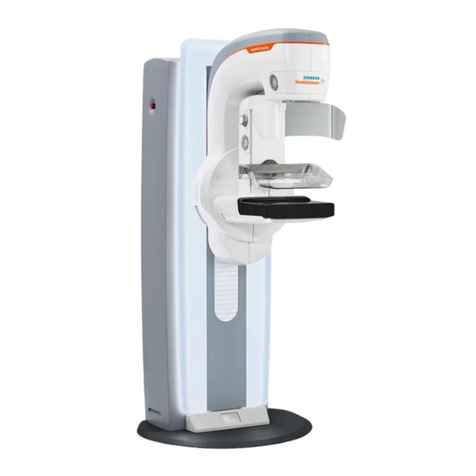
Siemens Healthcare
Siemens Healthcare MAMMOMAT Revelation Operator's manual
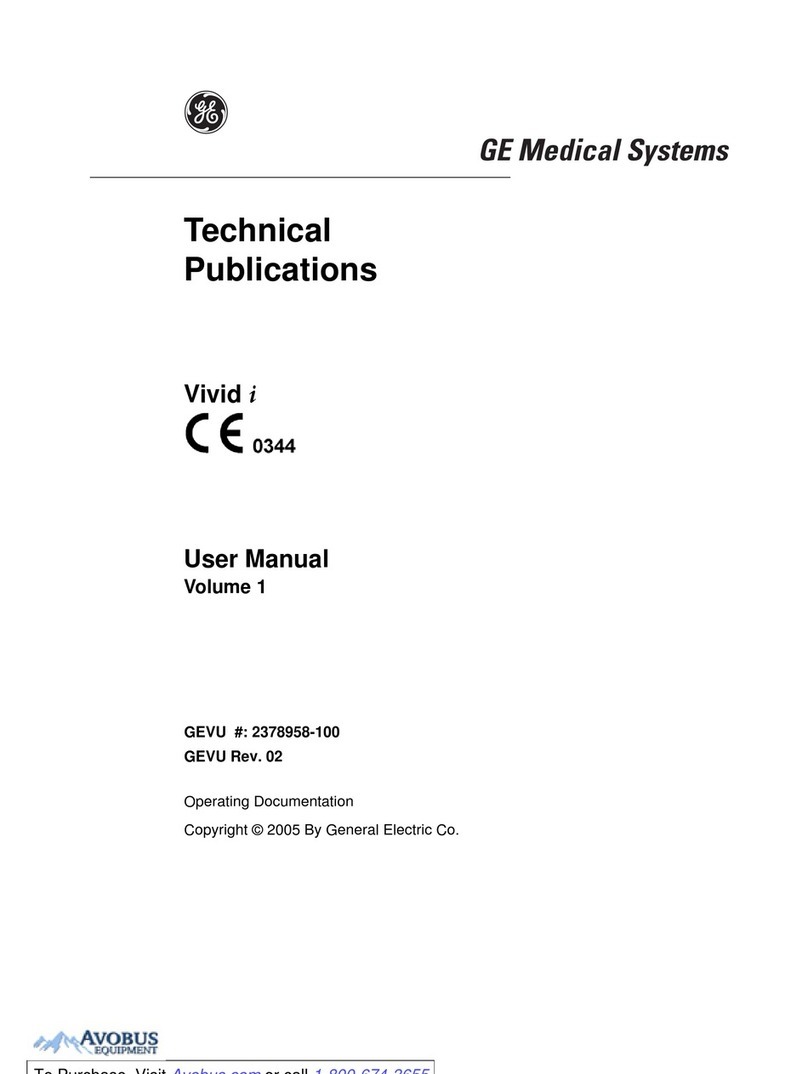
GE
GE Vivid i user manual
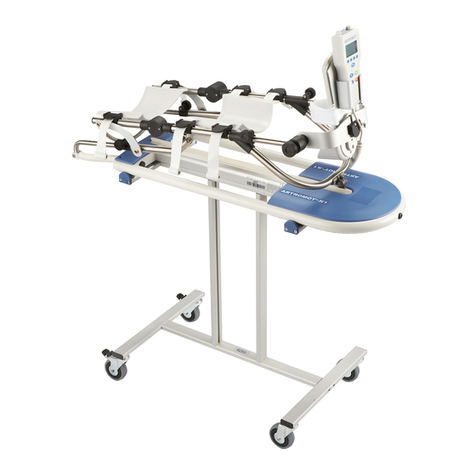
DJO
DJO Artromot-K1 Classic operating instructions
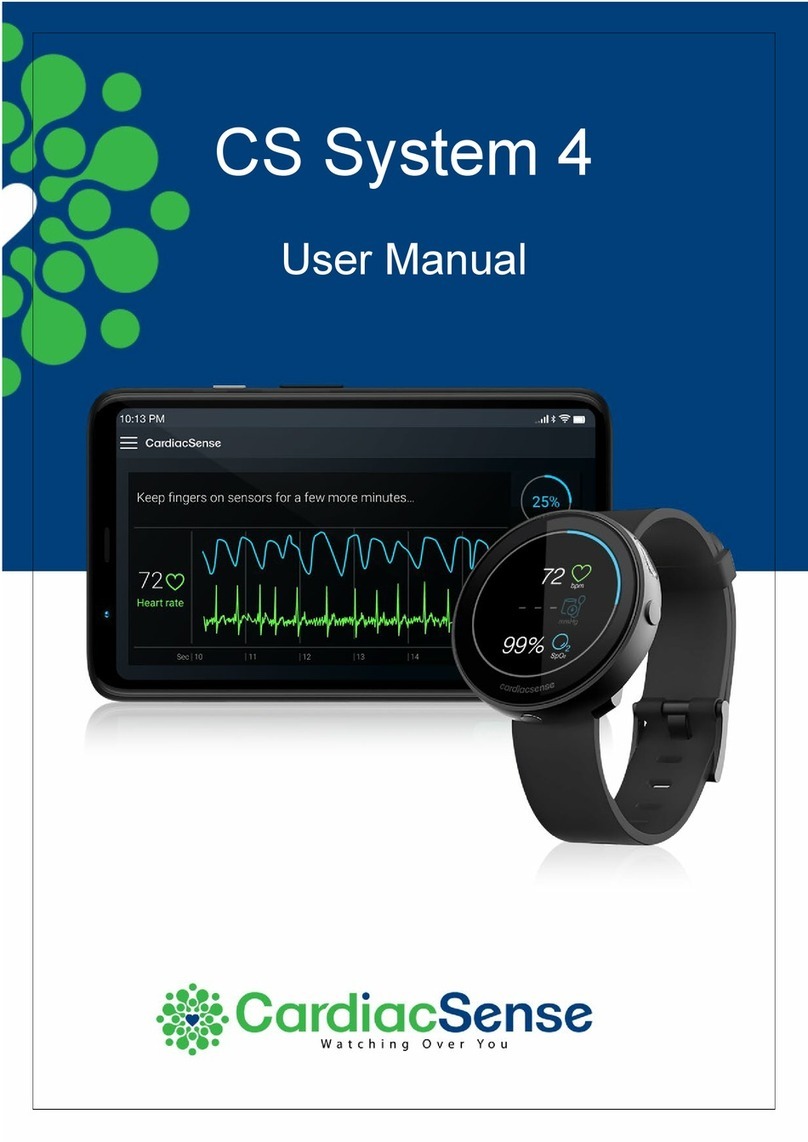
CardiacSense
CardiacSense CS System 4 user manual
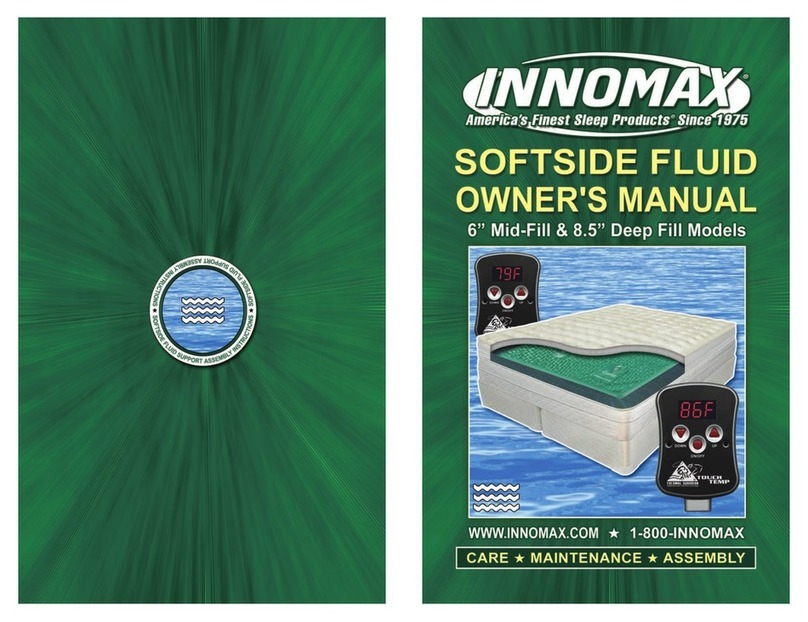
Innomax
Innomax Perfection Series owner's manual
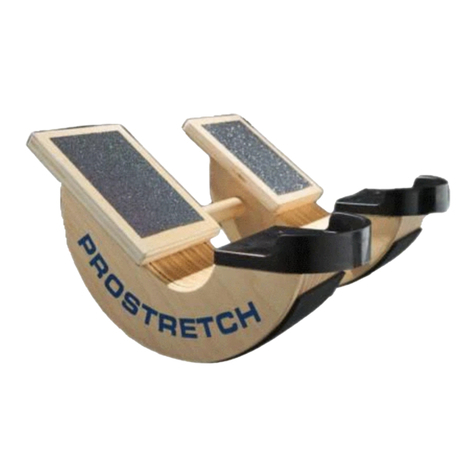
Medi-Dyne
Medi-Dyne ProStretch Illustrated instruction manual
